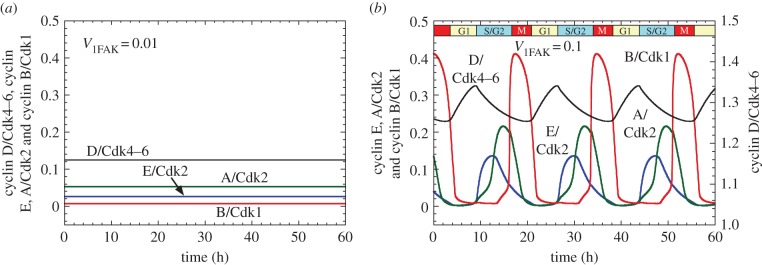Figure 3.

Effect of FAK activation on the onset of oscillations in the Cdk network driving the mammalian cell cycle. The time course of the active forms of cyclin D/Cdk4–6, cyclin E/Cdk2, cyclin A/Cdk2 and cyclin B/Cdk1 is shown in the presence of (a) low (V1FAK = 0.01 h−1) and (b) high activation of FAK (V1FAK = 0.1 h−1). Low FAK activation leads to a stable steady state in the levels of the various cyclin/Cdk complexes, which corresponds to cell cycle arrest. High FAK activation elicits the sequential, periodic activation of the four Cdk modules; this oscillatory behaviour of the Cdk network can be associated with cell proliferation. Conditions in (a,b) are the same as in figure 2d,f, respectively. (Online version in colour.)
